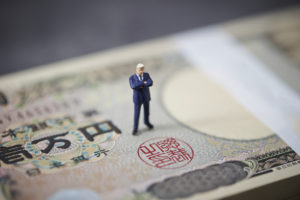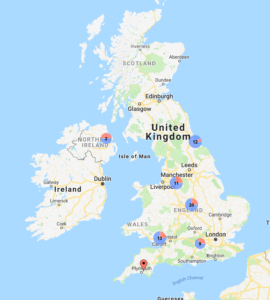German workstyle versus Japanese customer convenience
You can’t have German workstyles and Japanese customer convenience, says Shion Amemiya, a 26 year old Japanese woman who has been living and working in Germany for 4 years and has now written a book about it. The book hits a nerve in Japan because of the pressure companies are under to reform their workplace cultures and cut back on overtime. Germany is often pointed to as an example of a thriving economy where people don’t do overtime and take plenty of holidays.
Germany has one of the highest overtime rates in the EU, she says in an article in the Toyo Keizai. Actually, looking at Eurostat’s 2018 figures, the UK has the highest number of hours worked per week per full time worker and Germany is somewhere in the middle.
She points out that Germans will do overtime, if there is work that needs to be finished, although there are more Germans who will stick to their rights and leave on time regardless then there are in Japan. But as she notes, those kinds of people will not be well evaluated by bosses or colleagues.
Overtime is worked in order to finish a job, and there is a lot less “face time” overtime in Germany than in Japan. Also, if overtime is worked on one day, Germans will then work fewer hours to compensate for this the next day, she observes.
As for holidays – she says what is great for the holiday taker is not so wonderful for the end user. She notes how in the summer, offices are empty, but that also meant that the local government officials, dentists and doctors she wanted appointments with were also away on holiday, and her favourite cafe was shut. Often, the person away is the person in charge, and nobody else can take care of their work while they are gone, and you are told to wait a month.
In Japan customers will insist on the person in charge being contacted even if they are on holiday, but in Germany she notes, customers and suppliers are seen as equals, with mutual rights – “I take a holiday, so I must accommodate other people taking holidays.”
Because people don’t take much holiday in Japan, it is a convenient country – shops are always open, the person in charge is always available. Just copying another country without realising the drawbacks is pointless. Japan needs to come up with workstyle changes that are appropriate to Japan, she concludes.
For more content like this, subscribe to the free Rudlin Consulting Newsletter. 最新の在欧日系企業の状況については無料の月刊Rudlin Consulting ニューズレターにご登録ください。
Read More LinkedIn
LinkedIn YouTube
YouTube
 On the face of it, it looks to have been a good couple of years’ for
On the face of it, it looks to have been a good couple of years’ for  If you’ve noticed your Japanese colleagues looking grumpier than usual and making pointed remarks about the amount of money overseas offices soak up, you may need to be aware that it’s not just the heat and the typhoons getting to them, but the fact that despite Prime Minister Abe’s push, some companies are still cutting salaries – and employee numbers are shrinking. The summer bonus season, which will have been added to their monthly pay cheque in June or July, may have reminded them that their salaries have not increased much in real terms over all for some years, but they are supposed to be grateful they have a secure job, with bonuses, benefits and a pension.
If you’ve noticed your Japanese colleagues looking grumpier than usual and making pointed remarks about the amount of money overseas offices soak up, you may need to be aware that it’s not just the heat and the typhoons getting to them, but the fact that despite Prime Minister Abe’s push, some companies are still cutting salaries – and employee numbers are shrinking. The summer bonus season, which will have been added to their monthly pay cheque in June or July, may have reminded them that their salaries have not increased much in real terms over all for some years, but they are supposed to be grateful they have a secure job, with bonuses, benefits and a pension.

 According to
According to